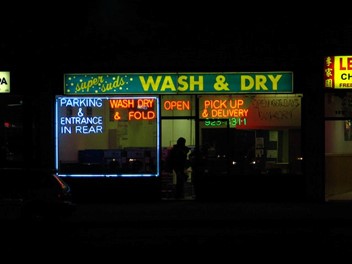Self-service laundromats have undergone an image change in recent years. Instead of run-down places to be endured, their popularity is on the rise.
Setting up a vended laundry business is simple, and although helpful, previous experience in the sector isn’t required to be successful. But what aspiring laundromat owners should consider is the ideal location for their store in a mature market, and any other additional services that they can provide to increase revenue.
David Shulick provides below some reasons why this business is so profitable, and how best to set up a laundry business for success.
Selling Points of a Vended Laundry Business
One of the main factors that make opening a laundromat so appealing is the fact that it is very easy to do. Maintenance costs can be low, and some people find that they learn how to repair the machines quite quickly. Labor costs are negligible, and aside from the machines, there is no store inventory to manage.
Laundromats are also a safe option. Unlike other businesses, they don’t see any seasonal declines in usage, as people will always need a way to wash and dry their clothes. According to a study by the Coin Laundry Association, over the span of 5 years, coin-operated laundry businesses had a 95% success rate.
Due to lower labor costs and requirements to operate a laundromat, business owners can dedicate less time to their stores. Many owners choose to see the enterprise as a part-time venture, allowing them to dedicate time to other projects. On the flip side, those with more than one location tend to devote themselves to the laundry business full-time.
Setting up a Laundromat
When looking to set up a coin-operated laundry business, a number of factors should be considered to ensure the best return on the investment.
Location
Entrepreneurs should look for a suitable location for their laundromat that ensures that they will have a reliable customer base. Locations that are surrounded by rental or student accommodation, apartment blocks, or low-income areas see more traffic. Often these types of properties don’t have the infrastructure to support a washer or dryer, or they have no outside space for a clothesline.
Potential laundry business owners should make sure that the unit they choose is at least 2,500 square feet in size. Accessibility features, such as easy access and nearby parking can also entice customers.
Payment Options
The most common type of laundromat setup uses coin-operated machines. However, there has been an increase in the number of cashless machines. Although more costly to set up, it can help to futureproof the business as people start to carry less cash with them and provide a hygienic payment option. Some businesses have a combination of coin and card-operated equipment to offer customers the choice.

Opening Times
Although laundromats don’t see seasonal drops in customers, there are certain times in the day when they are used more often than most.
Common times for people to wash their laundry are after work, or on a weekend, so staffing around this time is crucial to offer assistance and services. If the laundromat doesn’t have any additional services, they could facilitate this by operating 24/7.
Initial Expenditure and Licensing
The initial cost for starting in the vended laundry business varies depending upon whether an existing laundromat is being taken over, or a retail unit is being purposefully renovated into one. For an average size laundromat with no extra services or features, estimates can range between $200,000 and $500,000.
New laundromats will also have to consider the cost of permits and licenses. These include health and safety licenses, fire department permits, and sewer connection fees.
Potential Earnings from a Laundry Business
Despite the initial expenditure, laundromats can start to see a return on investment quite quickly.
One store’s annual gross income might range from $30,000 to $1 million, with the running costs and expenses ranging between 65 and 115 percent of the gross profits. For example, a laundry business that is turning over $50,000 a year nets $17,500 at best and loses $7,500 in the worst-case scenario.

